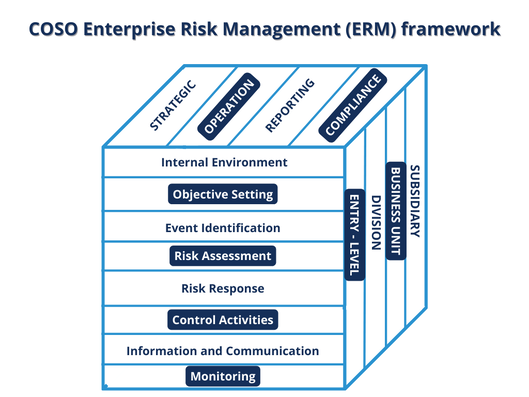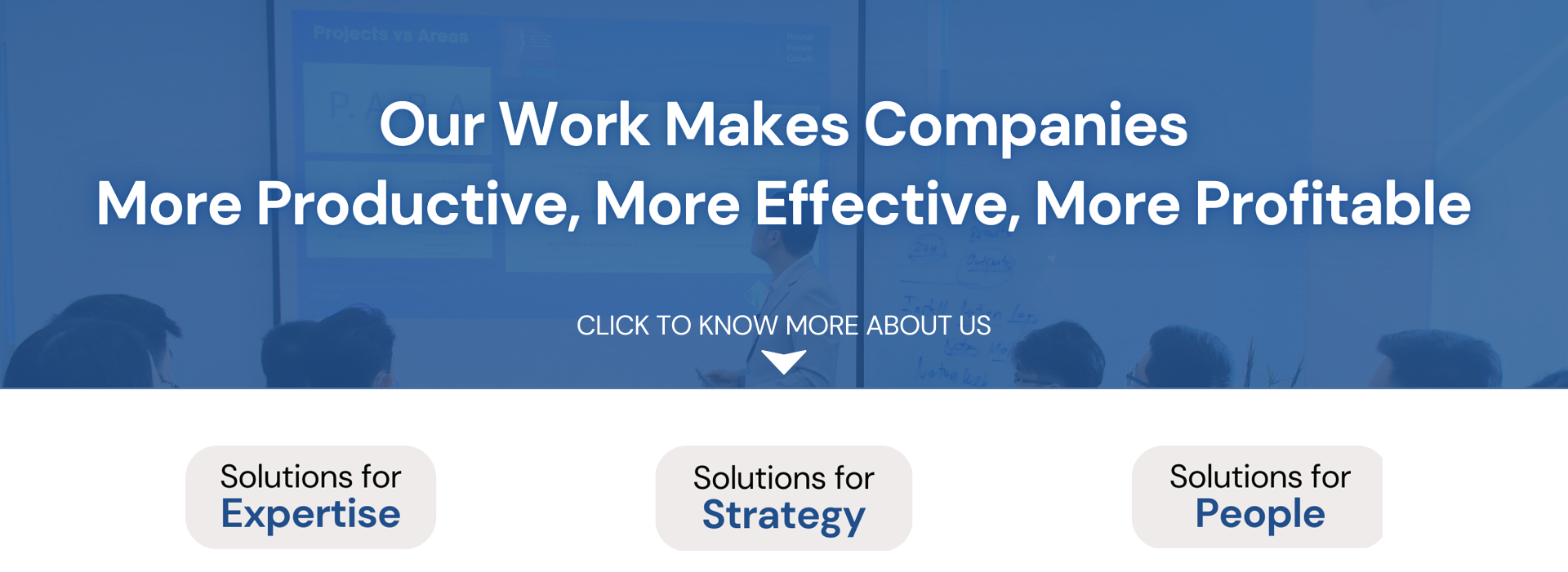|
What is the COSO Enterprise Risk Management (ERM) framework? ERM framework is a widely recognized and respected framework that provides a comprehensive and integrated approach to managing risks within an organization. It consists of eight components: 1. Internal Environment: Focusing on the organization's risk management culture, including the tone at the top, risk appetite, and commitment to ethical values. 2. Objective Setting: Ensuring that risks are identified and assessed in the context of these objectives. 3. Event Identification: Involving identifying potential events that could impact the organization's ability to achieve its objectives. 4. Risk Assessment: Helps to prioritize risks and allocate appropriate resources for mitigation. 5. Risk Response: Involving selecting and implementing risk response actions, such as avoidance, acceptance, mitigation, or transfer. 6. Control Activities: Establishing internal controls and policies to minimize the likelihood and impact of risks. 7. Information and Communication: Ensuring relevant risk-related information is captured, analyzed, and communicated throughout the organization. 8. Monitoring: Involving evaluating the framework's design and operation, as well as making necessary adjustments. Why does it important? The COSO ERM framework helps organizations better align their objectives, allocate resources efficiently, and mitigate potential threats. The framework also enhances transparency and accountability, instilling confidence among stakeholders and supporting long-term sustainability and resilience. To implement the framework, which critical skill that CHRO or leaders need to enhance? To master a risk management framework like COSO ERM, CHROs and managers should focus on the following key areas: 1. Risk Management Principles: Understand risk identification, assessment, response, and monitoring principles, including terminology and best practices. 2. Business Acumen: Develop a deep understanding of the organization's industry, operations, and strategic objectives to identify and prioritize specific risks. 3. Communication and Influencing Skills: Articulate risk-related information, emphasize the importance of risk management to stakeholders, and influence decision-making processes effectively. 4. Collaboration and Stakeholder Management: Build relationships, foster collaboration, and manage expectations with stakeholders across departments. 5. Analytical and Critical Thinking: Enhance skills in assessing risks, identifying potential impacts, and evaluating response options using data and risk assessments. 6. Change Management: Learn change management methodologies to navigate and lead organizational changes required for implementing a risk management framework. Can you master the ERM and make your own risk management strategy? ERM is one of the framework in the Pro Change and Resilience solution from Training 4.0 Training 4.0 is not just a course, which is a customized training program based on each companies’ needs and situation. After meeting, and discussing, your own risk management strategy or the method to build the strategy will be built and implemented. The purpose of Training 4.0 is not only providing the skill and knowledge, but delivering the long-term method for your company's sustainable growth. How does ERM make companies become successful? While I don't have access to real-time data, there are several companies in Vietnam that have implemented risk management frameworks, including the COSO ERM framework. Here are a few examples: 1. Procter & Gamble (P&G): P&G is recognized for its effective risk management practices. The company follows a structured approach to risk management, aligning with frameworks such as COSO ERM. P&G places a strong emphasis on risk assessment, mitigation strategies, and monitoring to ensure the achievement of its business objectives. 2. Vietcombank: Vietcombank is one of the largest commercial banks in Vietnam. It has implemented a robust risk management framework based on international best practices. The bank integrates risk management into its strategic decision-making processes and focuses on identifying, assessing, and mitigating various types of risks. Training 4.0 People Empowerment RPO
Pro EduX HR Audit Train The Trainers Future Leadership Program Workforce Competency Center Pro Career Coaching
0 Comments
Leave a Reply. |
Categories
All
AuthorWe are writing to share you about all the positives we, VSHR Group is making |
We are being featured
and presented in different RENOWNED Media, Press, conferences and platforms
VSHR Office AddressHead Office: 222 Dien Bien Phu, District 3, Ho Chi Minh, Vietnam.
Leadership Hub: 155 Ben Van Don, District 4, Ho Chi Minh, Vietnam. |
|
WHAT WE BELIEVE IN
In Marvel comics super heroes come from sky. But in real life, the true super heroes/ heroines always live among us. So let's do our part and make a great positive impacts for the industry and community together."
Connect with us
Copyright © 2024, by VSHR Group




 RSS Feed
RSS Feed

